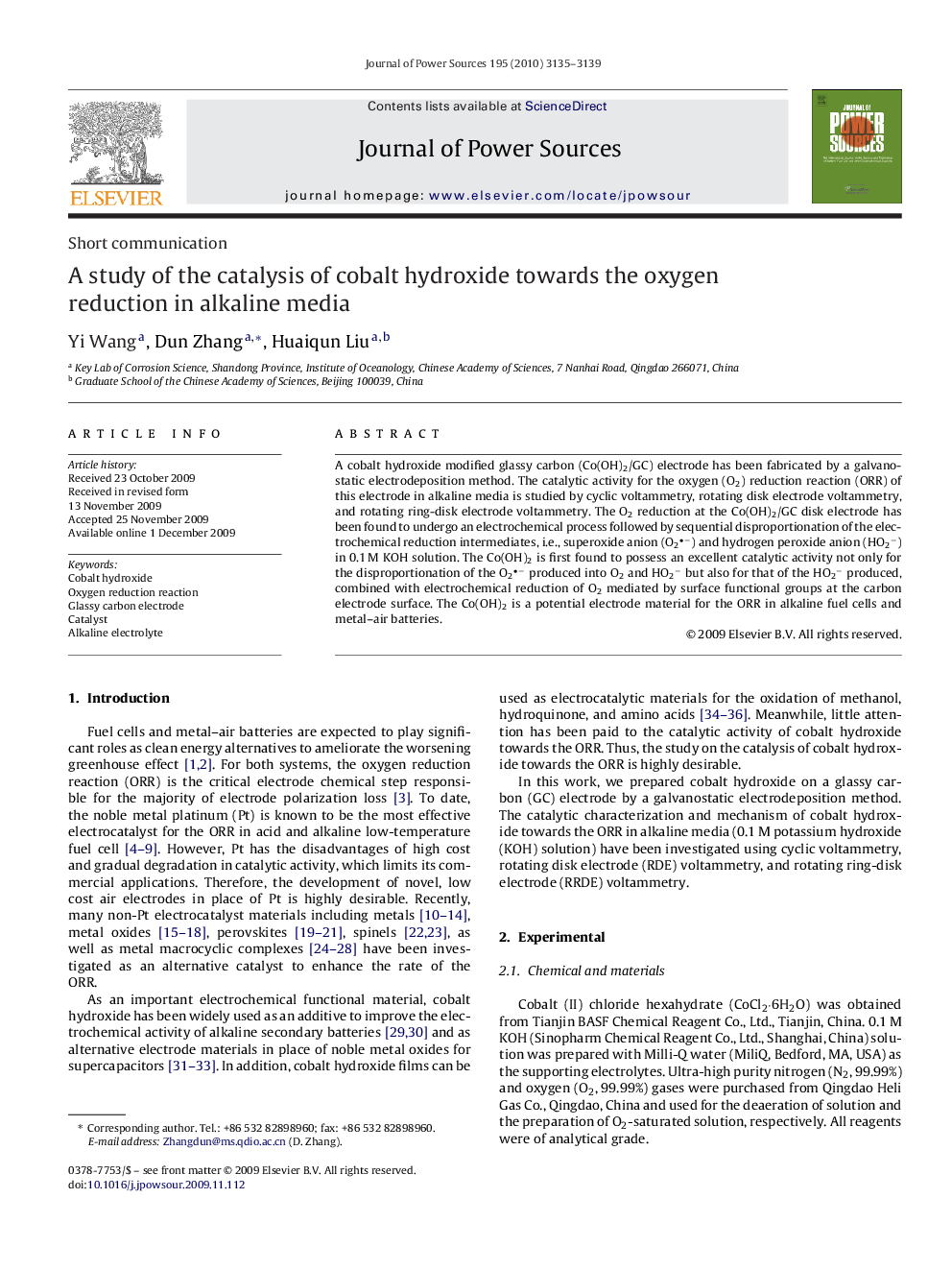| Article ID | Journal | Published Year | Pages | File Type |
|---|---|---|---|---|
| 1290503 | Journal of Power Sources | 2010 | 5 Pages |
A cobalt hydroxide modified glassy carbon (Co(OH)2/GC) electrode has been fabricated by a galvanostatic electrodeposition method. The catalytic activity for the oxygen (O2) reduction reaction (ORR) of this electrode in alkaline media is studied by cyclic voltammetry, rotating disk electrode voltammetry, and rotating ring-disk electrode voltammetry. The O2 reduction at the Co(OH)2/GC disk electrode has been found to undergo an electrochemical process followed by sequential disproportionation of the electrochemical reduction intermediates, i.e., superoxide anion (O2−) and hydrogen peroxide anion (HO2−) in 0.1 M KOH solution. The Co(OH)2 is first found to possess an excellent catalytic activity not only for the disproportionation of the O2− produced into O2 and HO2− but also for that of the HO2− produced, combined with electrochemical reduction of O2 mediated by surface functional groups at the carbon electrode surface. The Co(OH)2 is a potential electrode material for the ORR in alkaline fuel cells and metal–air batteries.
